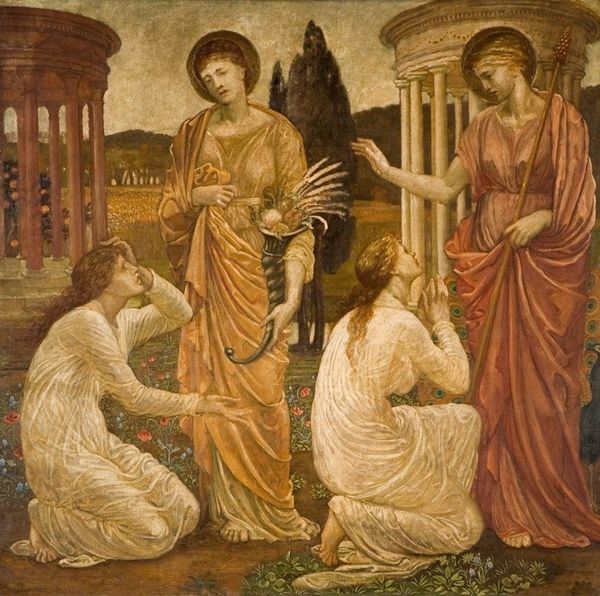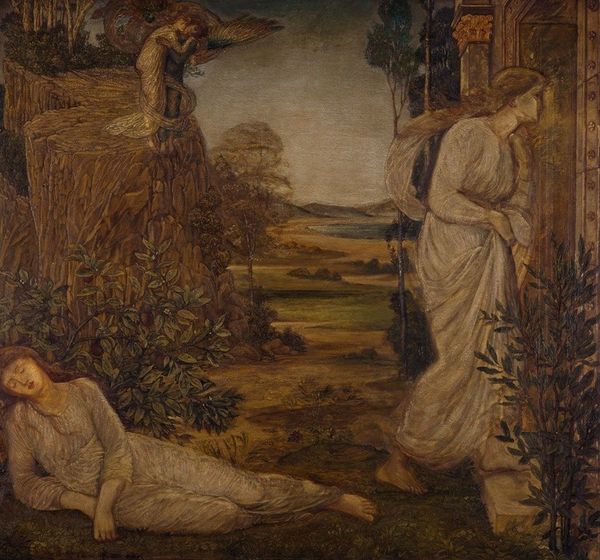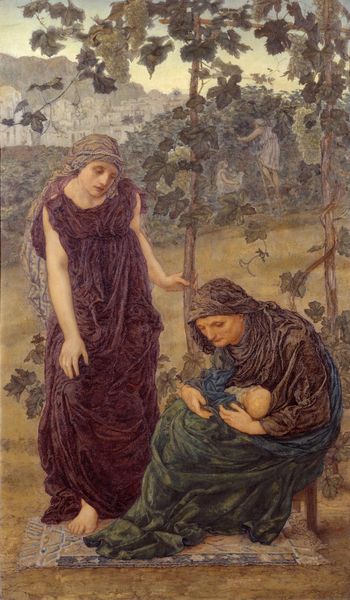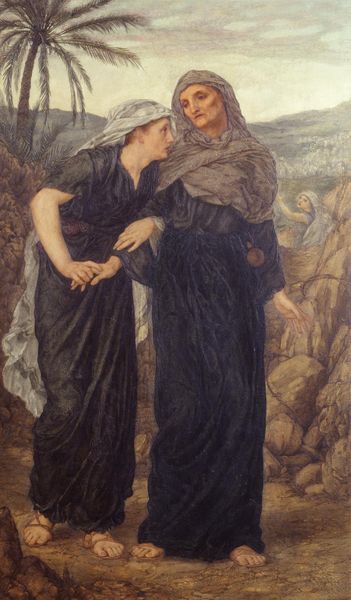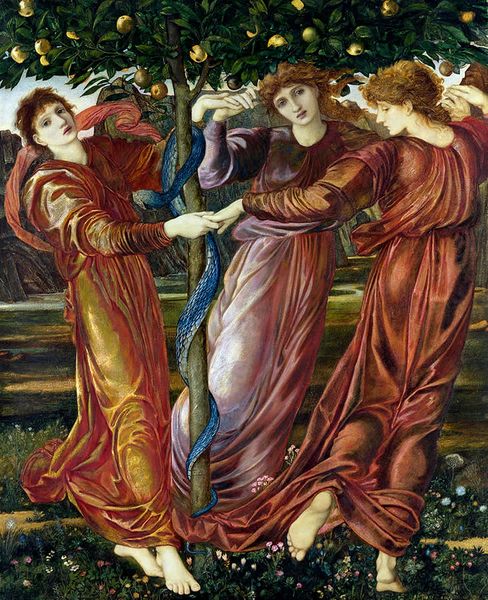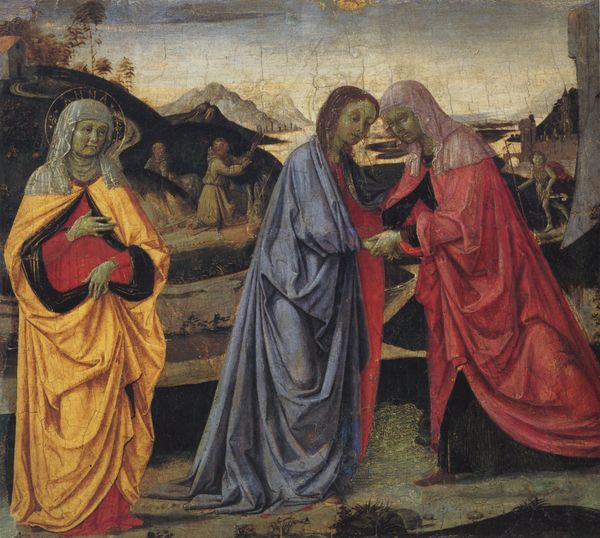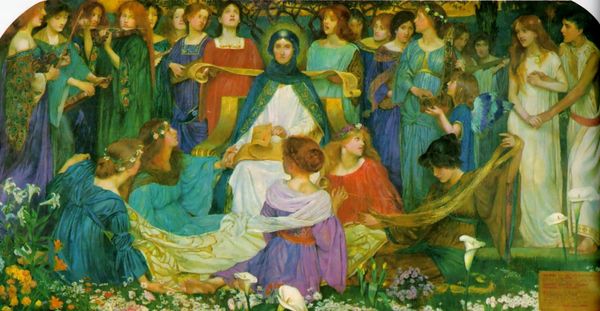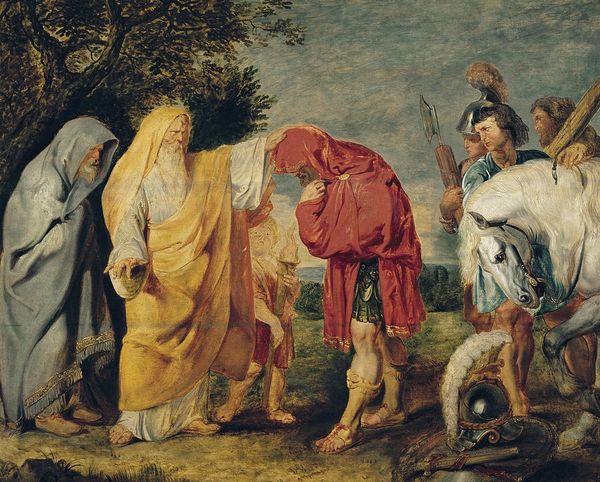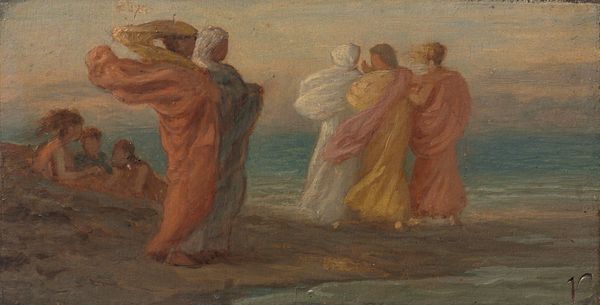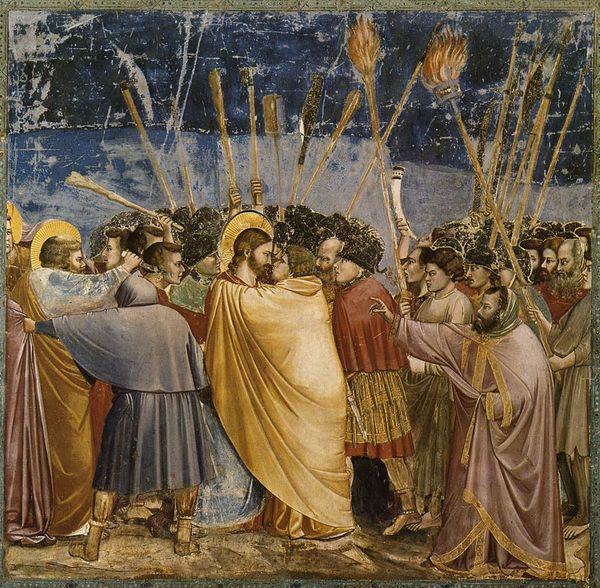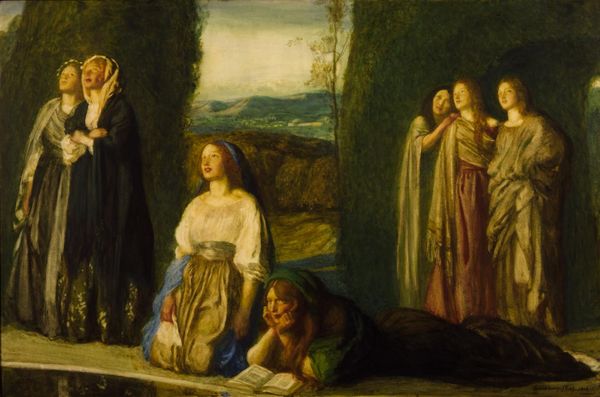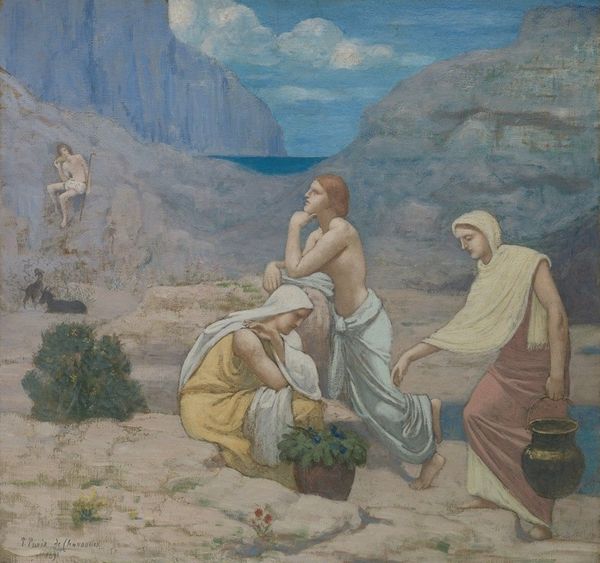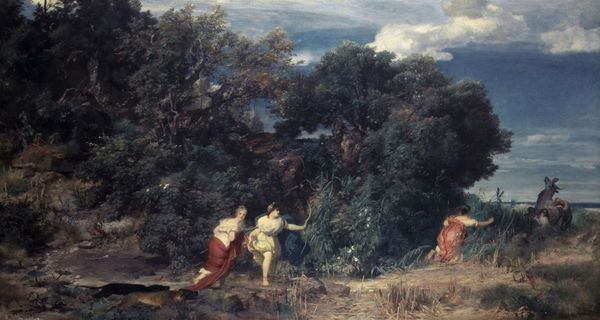
Copyright: Public Domain: Artvee
Curator: Look at this work by Edward Burne-Jones, completed in 1881. The title is "The King and other Mourners abandon Psyche to the Monster," and it's rendered in tempera and watercolor. Editor: My initial impression is one of melancholy processional—the muted palette adds to that somber feel, with an almost frieze-like arrangement of figures moving across the space. Curator: Exactly, Burne-Jones evokes that classic feel. The myth of Psyche, which fascinated the Pre-Raphaelites, is loaded with archetypal imagery: abandonment, sacrifice, beauty as both a blessing and curse…all woven into the symbolism. Editor: I agree. Observe the delicate, almost ethereal, rendering of drapery—the cascading folds create a rhythmic flow. It also directs our gaze to specific figures and actions. The artist is using form here to underscore the narrative and create this rhythmic unity of design. Curator: That focus is central to Burne-Jones's whole aesthetic. The Pre-Raphaelites believed in imbuing every element with symbolic weight. The color choices aren’t arbitrary either; the hues echo the emotional gravity of the scene. Blues suggesting sorrow, reds hinting at the looming danger… Editor: See how that line—particularly the profile of Psyche—it almost dissolves into the ground, suggesting this vulnerable state? Burne-Jones harnesses the subtle tension of the pigments, the textural density against flatter regions to emphasize form, which then mirrors her interior, fragmented state of being. Curator: It reflects this concept of collective memory embedded within visual form. Even without knowing the exact myth, we sense themes of sacrifice, grief, and a reluctant renunciation in how the characters hold themselves. The musical instruments point back towards archaic practices of sacrifice. It's like Burne-Jones accessed this older way of experiencing and representing deep psychological struggles. Editor: Agreed. By analyzing these structures and relationships, from color and line to form and spatial design, we uncover not just the subject but also the thematic complexity that Burne-Jones brings to "The King and other Mourners abandon Psyche to the Monster". Curator: This work makes me ponder how classical stories still find new ways to remind us that myth always contains echoes of enduring human experiences. Editor: And looking closer here really underlines how much an artist’s technical execution can influence the reading. These are subtle layers, and Burne-Jones does such interesting work that encourages repeated visits.
Comments
No comments
Be the first to comment and join the conversation on the ultimate creative platform.
